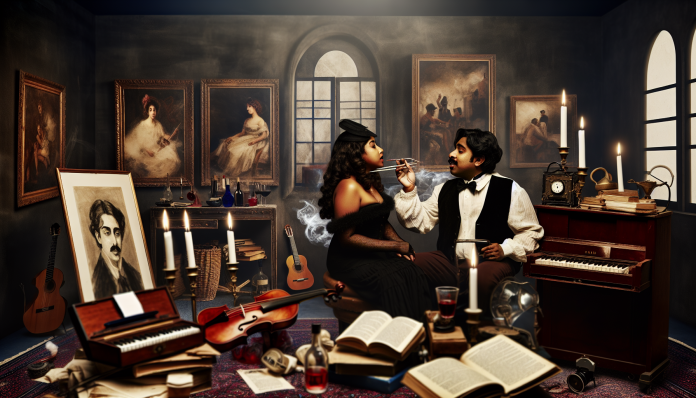Introduction
Billie Holiday, the legendary jazz and blues singer, is celebrated not only for her haunting voice but also for her tumultuous life and the scandals that often accompanied her fame. Born in 1915 in Philadelphia, Holiday would go on to become a pivotal figure in American music, influencing generations of artists. Her life, marked by a turbulent rise to stardom amidst the shadows of racism, addiction, and personal strife, is as captivating as her music. During a time when society struggled with its moral compass, particularly regarding race and gender, Holiday’s relationships and struggles would frequently land her in the headlines, illustrating the complex interplay between artistry and personal scandal.
The Scandal
While Holiday faced numerous personal crises, her romantic entanglements often stirred public interest. One of the most notorious scandals came in the late 1930s, revolving around her passionate but destructive relationships. One of her key affairs was with musician Artie Shaw, a notable white bandleader of the time. Their interracial relationship not only crossed social boundaries but also antagonized public sentiment, given that it was the Jim Crow era, where segregation was the norm and interracial couples faced severe hostility.
The media sensationalized their relationship, framing it within the context of racial tension and societal norms. In one particularly fevered article, a tabloid labeled the couple “America’s Most Scandalous Pair,” spotlighting their public appearances and the gasps they elicited in conservative circles. Quotes from the time revealed the cultural backlash: “A lady should know her place,” one commentator proclaimed, reflecting the patriarchal values that dominated the period.
Holiday’s affairs didn’t stop with Shaw; she had relationships with several high-profile men, including jazz musician Jimmy Monroe and the infamous mobster Louis McKay. These affairs often culminated in public disputes and were closely scrutinized by the press, who relished any opportunity to exploit the tabloid potential of Holiday’s personal life. In one incident, Holiday was involved in a brawl with Monroe outside a nightclub, which led to sensational headlines and further tarnished her public image.
Moral and Cultural Analysis
The societal reaction to Holiday’s relationships sheds light on the rigid moral framework of the 1930s and 1940s. At a time when a woman’s reputation was closely tied to her chastity and fidelity, Holiday’s unabashed approach to love and sexuality was considered scandalous. The double standard was evident; while male figures were often celebrated for their conquests, Holiday faced judgment and ostracism. Additionally, interracial relationships were not only frowned upon but also fraught with legal and societal repercussions, highlighting the racism that pervaded American life.
The consequences for Holiday were profound. This media scrutiny contributed to her struggles with addiction, as the pressure of public life compounded her personal demons. She faced numerous arrests on drug-related charges, which the press used to continue the narrative of the fallen woman. Meanwhile, her talent and artistry often took a backseat to her personal tribulations in public discourse.
Today, such scandals would likely be viewed through a different lens. Modern audiences tend to prize authenticity and openly embrace conversations about mental health and addiction. Public figures—especially women—are increasingly supported in their struggles rather than vilified. The narrative surrounding Holiday would likely highlight her resilience as an artist confronting systemic injustice, with a focus on her music rather than her tumultuous relationships.
The discourse around race and gender has evolved as well; an interracial relationship like that of Holiday and Shaw would now be celebrated as a progressive union, rather than shunned. Overall, while Holiday’s life was riddled with scandal, her legacy endures, illustrating how the complexities of human experience can resonate beyond the confines of societal norms.

